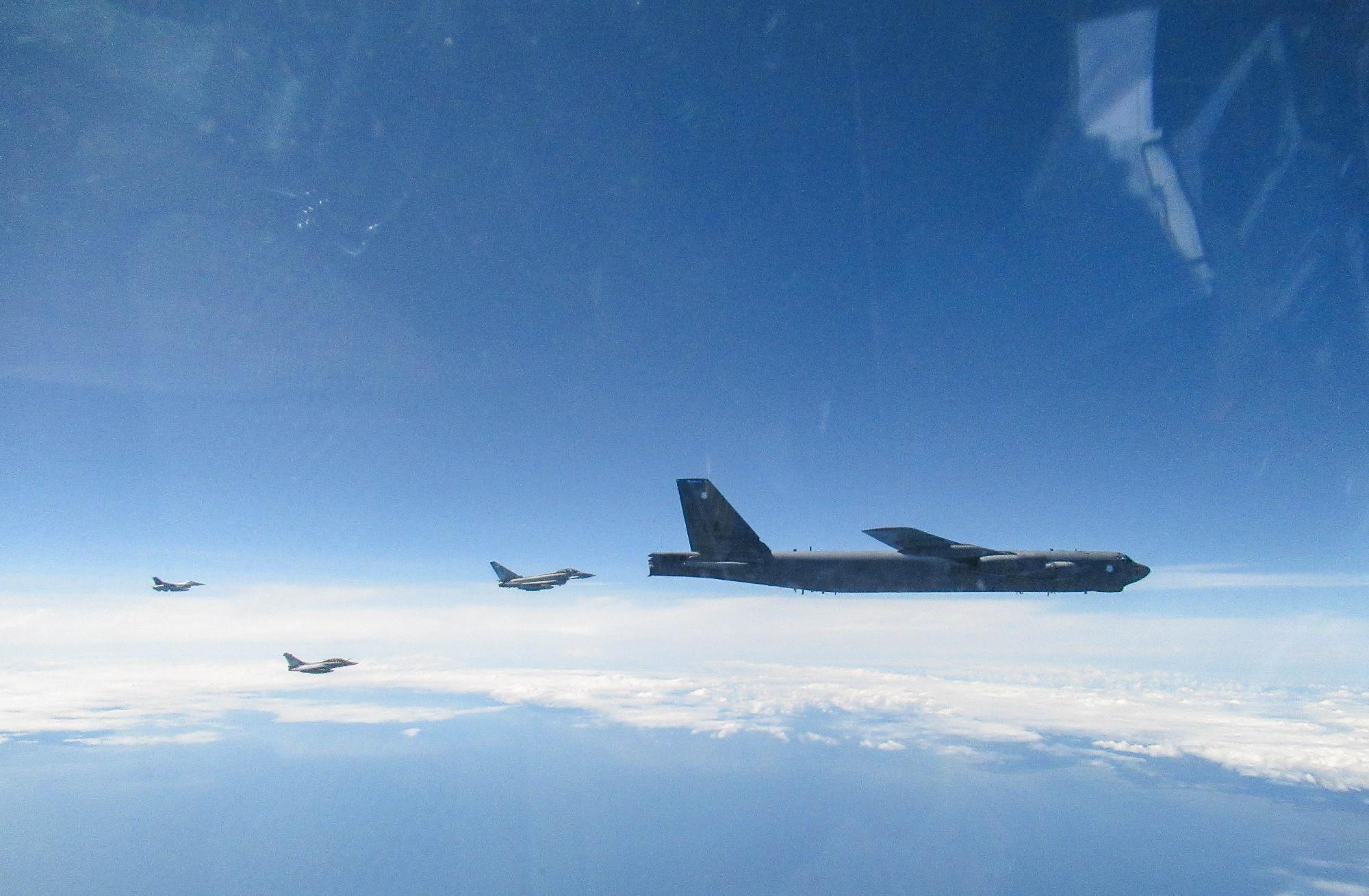The North Atlantic Treaty Organization (NATO) will begin its most significant military exercise in decades, the Steadfast Defender, amid the continuing Russia-Ukraine war.
The drills will be the most prominent military maneuvers since the Cold War, seeing roughly 90,000 NATO troops undertaking air, naval, and land war exercises.
The announcement of the exercises was preceded by Western officials and experts predicting Russia’s possible attack on Europe and NATO over the next few years. French President Emmanuel Macron said that a “Russian victory (in Ukraine) is the end of European security.”
While NATO did not directly name Russia as the target behind the exercises, the US’s European Command commander, General Christopher Cavoli, indirectly identified the threat as a “near-peer” adversary. The exercises, which will run through May, will involve NATO rehearsing its regional plans that envisage staging a defense in response to a “Russian attack,” Reuters reported.
Biggest Exercise Since the Cold War
“Steadfast Defender 2024 will demonstrate NATO’s ability to rapidly deploy forces from North America and other parts of the alliance to reinforce the defense of Europe,” a NATO statement said.
According to Cavoli, this reinforcement will occur during a “simulated emerging conflict scenario with a near-peer adversary.” Cavoli was interacting with journalists in Brussels after a two-day meeting of national defense chiefs.
However, Admiral Rob Bauer, the Dutch chairman of the NATO military committee, named Russia as the country for which the alliance was preparing for a “possible conflict,” according to Stars and Stripes. “I’m not saying it is going wrong tomorrow, but we have to realize it’s not a given that we are in peace, And that’s why we have the plans,” Bauer said.
The last exercises of such a scale were the Reforger during the Cold War in 1988 with 125,000 participants and then the Trident Juncture in 2018 with 50,000 participants. A significant section of the troops in the latest drills will also come from Sweden, which is slated to join the alliance.
The exercises were approved during the 2023 NATO Summit in Vilnius, Lithuania, marking a departure from the alliance’s hiatus from large-scale conventional military maneuvers. This was because, during the period, the bloc was engaged in long-running wars in smaller countries against non-state actors in Iraq and Afghanistan.
The dissolution of the Soviet Union also eliminated the primary existential conventional military threat. The signature element would be during the second part of Steadfast Defender when NATO’s Quick Reaction Force will be deployed to Poland on the alliance’s eastern flank. Parts of the maneuvers will also be held in the Baltic states, Germany, Norway, and Romania.
The Baltics are a new emerging flashpoint between NATO and Russia; Germany is a central logistics hub for incoming reinforcements. Norway and Scandinavia have been seen as simmering regions of tensions since Finland acceded to NATO last year. Romania meanwhile hosts the F-16 training base for Ukrainian pilots, where Kyiv’s combat aviators are trained on warplanes from The Netherlands and engineers and instructors from the US.
UK’s to Send F-35s
While finer details of the individual contribution from member countries are unclear, the United Kingdom accounts for a significant portion of men and machinery. Defense Secretary Grant Shapps said London would send 20,000 troops, advanced fighter jets, surveillance planes, warships, and submarines, with many deployed in eastern Europe from February to June.
The Royal Navy quoted a figure of 2000 sailors, 400 Royal Marines, and eight warships as a part of a “potent naval force of more than 50 allied warships as 30 nations (to) demonstrate the alliance’s collective resolve.” Meanwhile, the Royal Air Force (RAF) would send F-35 Lightning II stealth fighters and P-8 Poseidon to participate in “simulated conflict scenarios.”
Officials Acknowledge Defense Production Base
The Russians have stepped up production of missiles and other weaponry, Bauer and Cavoli said. “They are sparing no effort in their reconstitution. They are devoting an enormous fraction of their budget to the military over the coming years…and they are running their defense industrial base just as fast as they can right now,” Cavoli said.

In Europe, military officials from Germany, Belgium, and Sweden have recently warned that allies have a short window to prepare for possible conflict with Russia. While Russia’s military-industrial base is on a war footing, many allies have expended ammunition stockpiles to arm Ukraine.
Bauer, who has repeatedly sounded the alarm about the need for allies to step up their industrial production capability, said European societies that have grown accustomed to peace also need to become more prepared.
The EurAsian Times has touched upon weakening US and European defense industrial bases due to years of underinvestment, first reflected in their inability to meet Ukraine’s weekly requirement of tens of thousands of artillery rounds. While their factories could churn out such numbers in only a month, they had to arm Ukraine from their stockpiles, weakening their defense preparedness.
Their industries later expressed an inability to meet high manufacturing numbers at such short notice suddenly. They cited the hurdles and time-consuming process of setting up new factories, buying machinery, and hiring and training the workforce to increase production numbers.
The existing infrastructure was never oriented towards large wars with peer rivals, as the alliance was engaged in unconventional low-intensity conflicts with non-state actors, which did not require conventional military strength.
- The author can be reached at satamp@gmail.com
- Follow EurAsian Times on Google News




